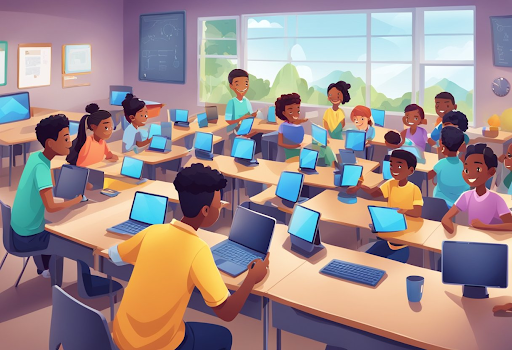Corporate training has been based on passive methods of learning, such as lecture training and presentation training, which have long been in the operations. Conventional approaches often fail to engage the workforce, leading to low interaction and the loss of valuable insights. In response to this, organisations are engaging in learning techniques. Skill development can be enhanced through interactive forms of learning, such as digital game based learning all which makes the process engaging and also much enjoyable. With all these programs, help promote skills and critical thinking, transforming a stronger, motivated workforce by enabling workers to grow.
Why Use Game-Based Learning in the Workplace
It is an important tool that makes the training exciting and productive. This is achieved by transforming learning into a friendly game that enhances skills, helps knowledge stay within a company, and inspires workers to become all that they can be.
- Increases Engagement and Motivation: Conventional corporate training may become dull and unmemorable. This is changed by game-based learning, which makes the process interactive and fun. Such elements as points, badges, leaderboards, and challenges help feed the inborn desire to succeed and friendly competitions. It encourages individuals to be more active, to run through modules, and to commit to learning to acquire new information.
- Improves Knowledge Retention: Information sticks because of the active character of games. Games involve people acting or doing things with what they know; in other words, people are forced to use what they are being taught, unlike in other passive ways. When an individual chooses a simulation or a puzzle, they are not merely memorising information, but are reconstructing. This practical application and immediate response help imprint knowledge on the brain, and this result in the improvement of long-term recall.
- Provides a Safe Space for Mistakes: When you are working in a real working environment, any error can be fatal. Game-based learning enables people to fail without risk, providing a safe environment. As an example, a new manager may train with virtual characters in the hard conversations, or a safety officer may make his or her way through a hazardous situation. The absence of restrictions to playing around and screwing things up improves the willingness of individuals to be more adventurous.
- Develops Critical Thinking and Skills: Games are all about problem-solving. They compel individuals to be thinkers who analyse and make decisions in high-stress situations. However, it is not mere rote learning. A strategic simulation to teach materials management in the supply chain or a puzzle to reinforce a policy of compliance, not only is the playing of the game a skill-building experience, but the game itself has its value as a behaviour change tool.
- Fosters Teamwork and Collaboration: Numerous games are team-based. Group challenges or collaborative situations can be added so people can learn to work as a group toward a shared purpose using game-based learning. Moreover, this also creates better relationships and increases social skills as team members are given the necessity to talk to one another, share their knowledge, and maintain dependency to achieve success.
Final Words
To sum up, it is an important tool which overcomes the drawbacks of traditional training. It has a motivation to compete and explore, which leads to professional growth that is not a mandatory necessity but rather a choice. Therefore, online game based learning is associated with high participation rates and knowledge retention, and it allows for the establishment of a safe environment where employees can learn. It is among the ways to induce a motivated, skilled and engaged workforce to tackle the business challenges with confidence.



